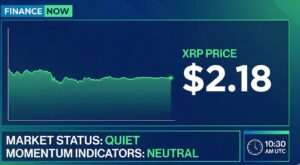There is significant untapped potential for blockchain applications in various crucial settings across a broad range of business sectors. The publishing industry has developed with technological advances. As a result, authors now have access to a wider variety of promotional tools, and one of them is NFT book publishing. In 2022, investors will be particularly interested in Web3. Thus, several parts of the publishing industry have started using Web3 technology to modify conventional models.
The textbook publisher Pearson announced that it would sell its textbooks as NFTs. The shift towards NFT book publishing by educational publishers is a reaction to the loss of revenue from secondary markets for their products. In addition to fostering a feeling of connectedness among publishers, NFTs have helped Time magazine generate new sources of money. By using Web3’s interactive features, Time magazine is showing what’s possible in the publishing sector.
Blockchain In Publishing: Do Web3 And Blockchain Have The Potential To Improve Publishing?
Publishers have been hesitant to try out blockchain technology because of the lack of guidance around its potential applications in the publishing industry. Over 90% of publishers in the latest survey agreed that blockchain might revolutionize the news industry, yet just 10% have already started using it. Blockchain was first created to power digital currencies, but it has since found usage in everything from tracking music royalties to registering voters. Blockchain in publishing has been hailed as a solution to ensure fair and secure transactions, content distribution, and intellectual property ownership.
NFT Book Publishing: A Long-Term, Cost-Effective Strategy For Authors And Publishers
Content delivery, payment options, and all other monetary and commercial transactions are always handled by a third party on whom authors must always rely. Companies like Amazon or other ebook retailers that sell digital publishing keep a cut of the profits that should be paid to the writers. Blockchain applications allow publishers to cut out intermediaries and keep more of an author’s earnings for themselves. Readers can set up microtransactions, and eBook sales can be monitored, all due to this cutting-edge innovation.
A Reliable System For Protecting Intellectual Property
Piracy and copyright violations have long been a concern in the publishing sector. Using blockchain technology, publishers can easily add time stamps and author bios to digital material without human intervention. Compare that to the ineffectiveness of watermarks, and authors will see how much more efficient this method is. Even if an eBook has been shared around with a few different people, the actual author can still guarantee that the copyright remains in their possession and that its valid owner can be identified and located. Digital publishing materials can be protected for both creators and publishers by adding blockchain ID stamps.




























